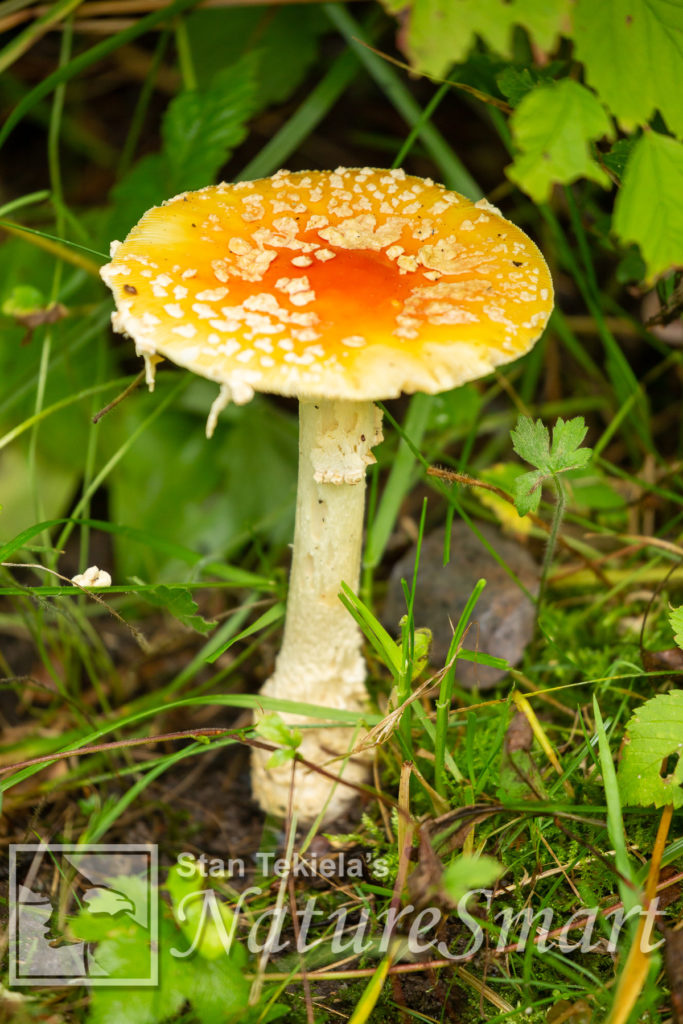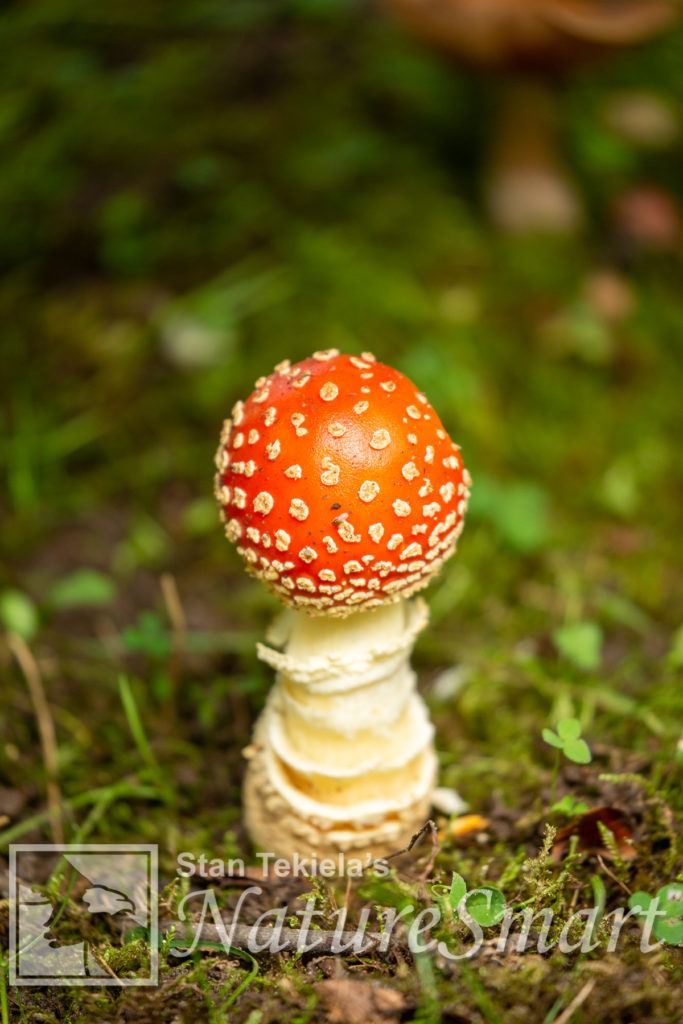
Autumn Is Mushroom Time
Moving into autumn means it’s mushroom time! Here, Stan Tekiela shares with us the amazing story of the Fly Agaric.
The cooler temperatures and increased precipitation cause mushrooms to pop! But before I go on any further about mushrooms, I need to share some basic facts. First, if you ever plan on collecting wild mushrooms, then you should understand exactly what a mushroom is and what it does. This means understanding why it grows, how it grows, and what it does. Second, there are many deadly poisonous mushrooms. Make sure you consult a field guide or, even better, two field guides because you can never be too cautious.

Recently, while I was photographing Black Bears, I ran across some amazing mushrooms called Fly Agaric or Fly Amanita (Amanita muscaria). These are large and obvious mushrooms and could be the most recognizable mushrooms on the planet. No doubt, you have seen these in person, illustrated in books, or depicted in movies. They are often seen illustrated in children’s books because of their bright colors.
The Fly Agaric is a mushroom, sometimes called a toadstool, that is of the genus Amanita. It got its name from the fact that it is often used to attract and kill houseflies. The Amanitas are a group of mushrooms that contain some of the most toxic and deadly shrooms on the planet. This group contains the Death Cap (Amanita phalloides) and the Destroying Angel (Amanita virosa) mushrooms, both of which will easily kill a healthy adult human with just one or two mouthfuls. That is not to say that you will immediately drop dead upon eating one of these killers. No, it is a long, drawn-out process that actually starts about two to three days after you have ingested the deadly mushrooms and ends about a week or more later. The amatoxins in these mushrooms kill the liver, so you actually die from liver failure. The only known cure for ingesting these deadly mushrooms is a liver transplant. Not pleasant!
The Fly Agaric has a long, white stem and a loose-fitting skirt around the upper part of the stem. All of this grows or emerges from a white ball-shaped cup at the base. Although classified as poisonous, it doesn’t contain the deadly compounds that kill your liver. It contains ibotenic acid, which converts to muscimol. Muscimol is one of the principal psychoactive chemicals and causes massive hallucinations. Now before you get any crazy ideas about using this mushroom recreationally, you need to know that the amount of muscimol varies widely from region to region and season to season, so you have no idea how much muscimol is present in any given mushroom. In addition, the chemicals also cause intense stomach cramps, sweating, vomiting, and diarrhea. It is reported that you are so sick that you wish you would die, but you don’t.

It has also been reported that deaths from eating this mushroom, whether intentional or accidental, are rare. However, it has been estimated that 15 large caps of the Fly Agaric are enough to kill an adult. It’s best not to mess with these mushrooms.
The Fly Agaric grows around the world in northern temperate zones. Because of this, there are many reports of many different cultures around the world using the Fly Agaric for medicine or in ancient ceremonies.
For example, it was recorded that shamans of Siberia used this mushroom to achieve a trance-like state. It has also been used in many religious communities. The Siberia shaman would eat the mushroom and others would drink his urine. The urine, containing the psychoactive elements, would be more potent than the mushroom itself and would have fewer negative side effects, such as muscle twitching and sweating, suggesting that the original person eating the mushroom acted like a filter for the other compounds that caused these negative side effects.
So, this autumn, as it is mushroom time and you are outdoors, make sure you look for the Fly Agaric. Be safe—don’t even touch it. Just enjoy it with your eyes or camera.
If you enjoyed Stan’s post about autumn and mushroom time, you may consider one of his amazing nature books: Majestic Eagles; The Lives of Wolves, Coyotes, and Foxes; or Backyard Birds: Welcomed Guests at our Gardens and Feeders.
You can follow Stan on Facebook and Twitter, or contact him via his web page. Stan’s nationally syndicated NatureSmart Column appears in more than 25 cities spanning 5 states (Minnesota, Wisconsin, Michigan, Illinois, and Pennsylvania) and is circulated to more than 750,000 readers.
For more stories about wildlife and nature, sign up for our newsletter now!



Finest Formula Brand
While most of the mushroom are available all year round, many are at their peak in fall and winter .
Though Chaga mushroom is present year-round, some people insist that the colder months are the best time to forage Chaga mushroom because the birch is dormant and there is more energy stored in it. Thus, Lion’s Mane mushroom they’re a cool weather mushroom, September through mid-October is good time to find them and season tapers off when we start having hard frost in mid or late October.